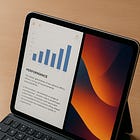iPhone 20 Could Ditch Physical Buttons for Haptics
Apple’s 20th-anniversary iPhone may introduce a revolutionary buttonless design powered by advanced haptic feedback.
Apple may be planning its most radical design shift since the iPhone X. A new leak suggests the 20th-anniversary iPhone, expected in 2027, could eliminate all physical buttons in favor of solid-state controls with haptic feedback. This long-rumored innovation would represent a major leap toward a seamless, uninterrupted design and redefine how users interact with their most personal device.
The report, originating from Weibo leaker Instant Digital, claims Apple has finalized the functional verification for a buttonless design. If true, the iPhone 20 would replace the power, volume, Action, and camera control buttons with solid-state surfaces that use localized vibrations to simulate the feel of a physical click. This isn’t just a minor tweak; it’s a fundamental reimagining of the iPhone’s physical form.
Try it free for 7 days and see why thousands of readers can’t get enough of us.
A Seamless Future: Why Go Buttonless?
Apple’s design philosophy has always trended toward minimalism and simplicity. The company has a long history of removing ports, buttons, and other physical components to create more durable and elegant devices. From the elimination of the 3.5mm headphone jack to the removal of the physical Home button, each step has pushed the iPhone closer to becoming a single, uninterrupted piece of glass and metal.
A move to solid-state buttons offers several key advantages:
Increased Durability: Physical buttons are mechanical parts with a limited lifespan. They are also points of entry for dust and water. Replacing them with solid-state components would make the iPhone more resilient and improve its water resistance.
Design Freedom: Removing the cutouts required for physical buttons would allow for a more streamlined and continuous chassis. This could be a critical step toward achieving the rumored all-glass, wrap-around display that has been described as Jony Ive’s dream iPhone.
Enhanced User Experience: Haptic feedback, powered by Apple’s Taptic Engine, can provide a more nuanced and customizable experience than a simple physical click. Apple could program different feedback for different actions, providing a richer, more responsive feel.
Haven’t We Heard This Before?
The idea of a buttonless iPhone is not new. Rumors of solid-state buttons have surfaced multiple times, most recently in connection with the iPhone 16 Pro. Each time, the predictions failed to materialize, leading to skepticism about whether Apple would ever commit to such a significant change.
However, the context is different this time. The iPhone 20 is not just another annual update; it’s slated to launch in 2027, marking the 20th anniversary of the original iPhone. Apple has a history of introducing landmark innovations on these anniversary models. The iPhone X, which celebrated the 10th anniversary, introduced the world to Face ID, the notch, and a nearly bezel-less OLED display, setting the design standard for years to come.
An all-haptic, buttonless design would be a fittingly bold move for the iPhone 20. It aligns perfectly with other ambitious rumors for the device, including the potential for an all-glass, wrap-around display with no cutouts for the camera or sensors. A truly seamless screen would almost necessitate the removal of physical buttons from the frame.
The Technology Behind the Touch
The magic behind a buttonless design lies in Apple’s Taptic Engine. This sophisticated haptic feedback system already powers many of the tactile sensations on the iPhone, Apple Watch, and MacBook trackpads. The Force Touch trackpad, for example, has no moving parts but uses haptics to perfectly mimic the feel of a physical click.
To replace all of the iPhone’s buttons, Apple would likely need to integrate multiple, smaller Taptic Engines along the device’s frame. These would provide localized vibrations precisely where the user’s finger is pressing. This would allow the device to distinguish between a press on the volume up “button” versus the volume down “button,” even though they are part of a single, solid surface.
This technology would also allow for new interactions. The rumored camera control button, for instance, could offer haptic feedback that changes as you half-press to focus or slide to zoom, mimicking the feel of a dedicated camera.
Challenges and The Path Forward
While the vision is compelling, creating a completely buttonless iPhone presents significant technical and user-experience challenges. How would you perform a hard reset? How would the device function inside a case? How would users adapt to a fundamentally new way of interacting with their phones?
Apple has likely spent years prototyping and testing solutions to these problems. The Weibo leaker’s claim that the technology has completed “functional verification” suggests that Apple believes it has found viable answers. A buttonless design would be a definitive statement, reinforcing the iPhone’s status as a pioneer in industrial design and user interaction.
If the rumors hold true, the iPhone 20 will be more than just an anniversary model. It will be the culmination of a two-decade-long journey toward a device that is simpler, more durable, and more intuitive than ever before. It would be a bold step into the future of the smartphone, where the line between hardware and software blurs into a single, seamless experience.
Enjoyed this post? Share your thoughts in the comments!
Like, Restack, and Share to spread Apple Secrets!



